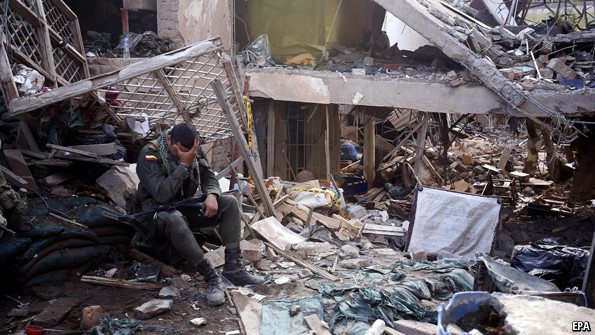Colombia's conflict
War and peace

A day later, the contradictions mounted. FARC commanders said they had ordered their troops to cease all hostilities for 30 days from December 15th "in response to a national clamour". The FARC called on the government to reciprocate by calling off its own military offensive, arguing that public opinion was confused by "this strange cocktail of death and dialogue”. If that sounds like an apt description of the FARC’s own actions, from the guerrillas’ point of view the timing made perfect sense. They will have seen the Inzá attack as a necessary show of force before the announcement of a unilateral ceasefire, and a way to try to pressure the government into following suit.
Despite violence on the ground, negotiators continued discussions in Havana on the third topic of the six-point peace agenda, which deals with the issue of drug crops and narco-trafficking. The two sides have already reached partial agreements on the issues of rural development and political participation. Citizen groups in Colombia have called on the FARC to maintain its ceasefire until congressional elections in March, and even until presidential elections in May in which Mr Santos will seek re-election. Although such an extended pause in fighting is unlikely, the government is thought to expect more gestures of goodwill from the guerrillas as the elections near in order to win public support for a deal. The peace talks still elicit more scepticism than optimism from the Colombian public. The past few days will not have changed their minds.
No comments:
Post a Comment